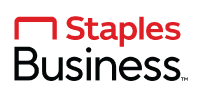What Goes into a Good Supplier Diversity Program?
Download this article in PDF format.
The focus on diversity is growing in the business world, where procurement teams have historically strived to meet (or exceed) their companies’ supplier diversity requirements. With racial injustice and social unrest both driving the need for more inclusivity across all business sectors, updating and enhancing supplier diversity programs will likely remain an imperative for companies as we move into 2021 (and beyond).
According to HBR, a diverse supplier is a business that is at least 51% owned and operated by an individual or group that is part of a traditionally underrepresented or underserved group. Common classifications include small-business enterprises (SBEs), minority-owned enterprises (MBEs) and woman-owned enterprises (WBEs). “Over time,” HBR points out, “the definition of diversity has expanded to businesses owned by other minority groups such as LGBQT, veterans, and proprietors with disabilities.”
Key Benefits
Supplier diversity programs can be part of a company’s efforts to maintain high moral and ethical standards. For instance, UPS spends $2.6 billion annually doing business with around 6,000 small and diverse suppliers with a goal to increase that spend amount year over year, HBR reports. To achieve that goal, it partners with and supports multiple councils and third parties such as the Women’s Business Enterprise National Council, the National Minority Supplier Development Council and the U.S. Hispanic Chamber of Commerce.
In addition to the moral and ethical arguments associated with diversity, there are also sound commercial reasons for creating supplier diversity programs. For example, an inclusive procurement strategy widens the pool of potential suppliers and promotes competition in the supply base, HBR states, which can improve product quality and drive down costs.
In Forbes, Ventureneer’s Geri Stengel discusses how supplier diversity can help companies of any size recover from the global pandemic. She says diverse companies produce innovative products, help increase competition (resulting in better prices and service levels) and help companies serve emerging/untapped markets, among other benefits.
Bottom-Line Impacts
Diversity also positively impacts the bottom line and draws in more customers. Pointing to a Hootology study that measured such impacts, Stengel says such programs “lift the perception” of a brand’s value of diversity by 25% to 70%. And while only about 4% of the general public is aware of supplier diversity programs, every additional percentage point increase in that percentage equates to 2.5 million more people who will consider a corporation's brand in a favorable light.
Diversifying suppliers means also diversifying the customer base your company appeals to. “The more diverse people and businesses contribute to your corporation’s products and services, the more diverse the end result will be,” Olivia Riggio writes in “Why Supplier Diversity Programs Are Essential.”
“If you practice diversity internally,” she continues, “putting your money where your mouth is to support diverse suppliers is important, especially as consumers become more informed and willing to hold corporations accountable.”
How to Get Started
To find minority-owned vendors that comply with procurement requirements, HBR tells companies to seek out small, diverse suppliers that need support in the certification process and create mentoring and training programs to help them meet standards. “Another approach is to partner with relevant councils and chambers of commerce that provide these support systems,” it adds. Thomasnet outlines these four strategies for an effective supplier diversity program:
- Identify your diverse suppliers and your spend with them to understand what your program looks like and where the gaps are.
- Incorporate diversity information into the supplier onboarding process. “Make it part of the onboarding paperwork what types of certification you’ll accept as a baseline,” it says, “and make sure you get any third-party certification information.”
- Use a good tracking system that keeps detailed metrics to find and evaluate your diverse vendors.
- Get top-down support for the program, which will need that backing in order to sustain itself. “If possible,” Thomasnet adds, “make sure supplier diversity is part of the company’s policies from the beginning.”
About the Author

Bridget McCrea
Contributing Writer | Supply Chain Connect
Bridget McCrea is a freelance writer who covers business and technology for various publications.







